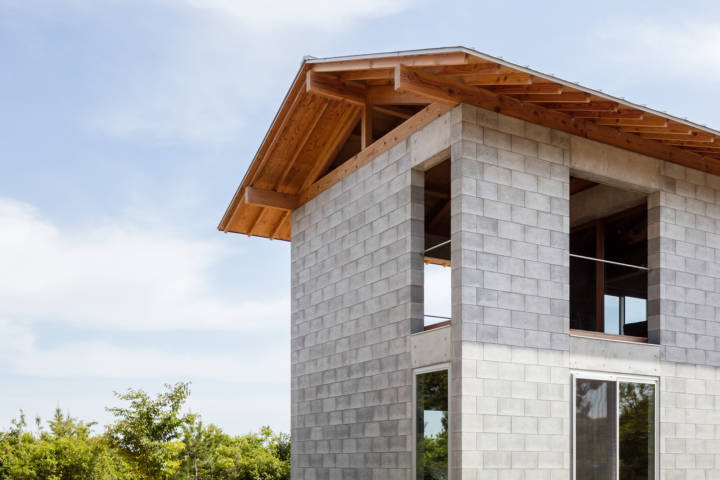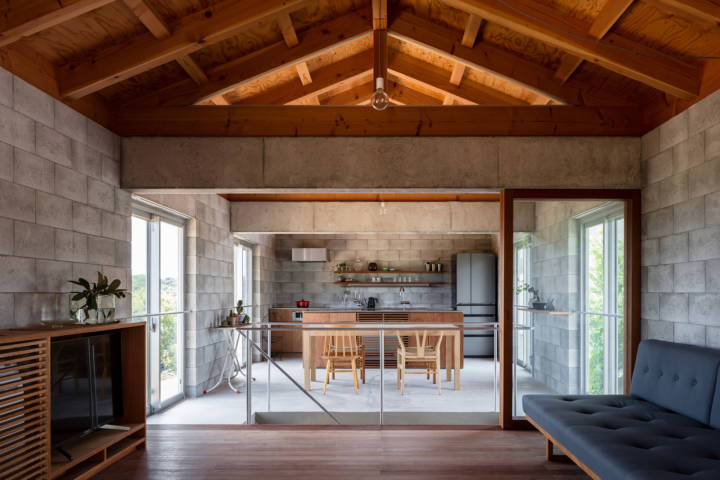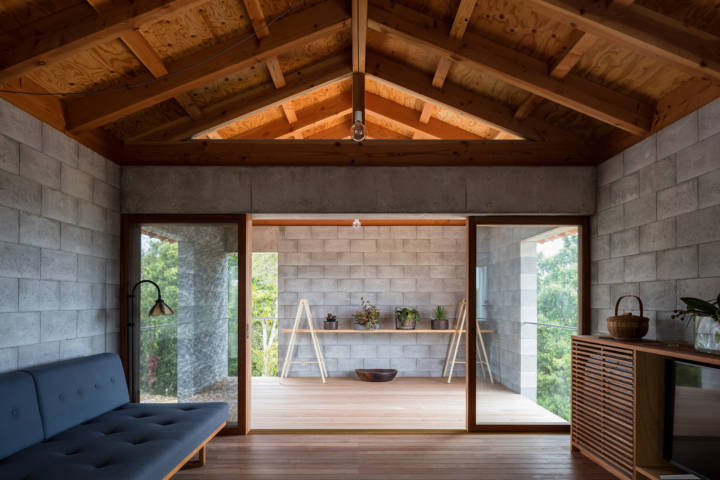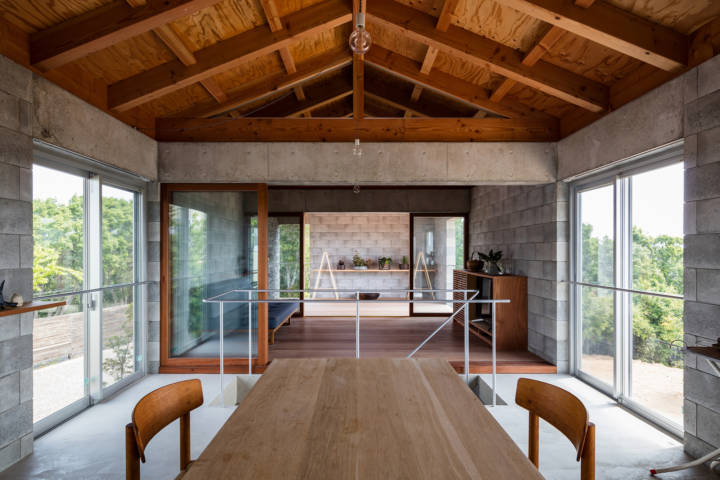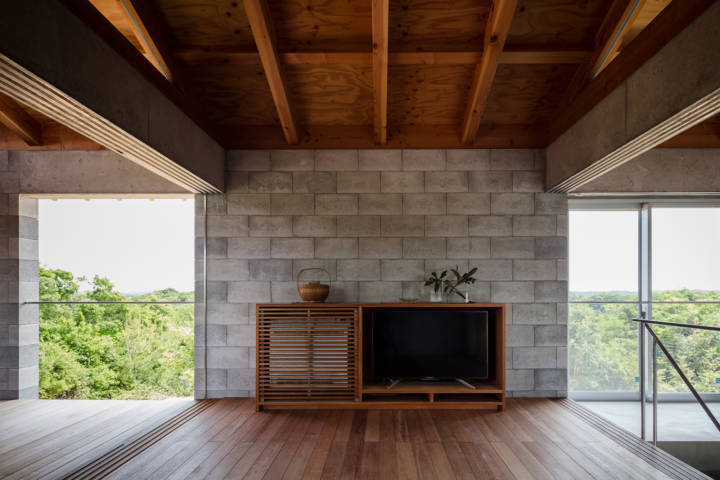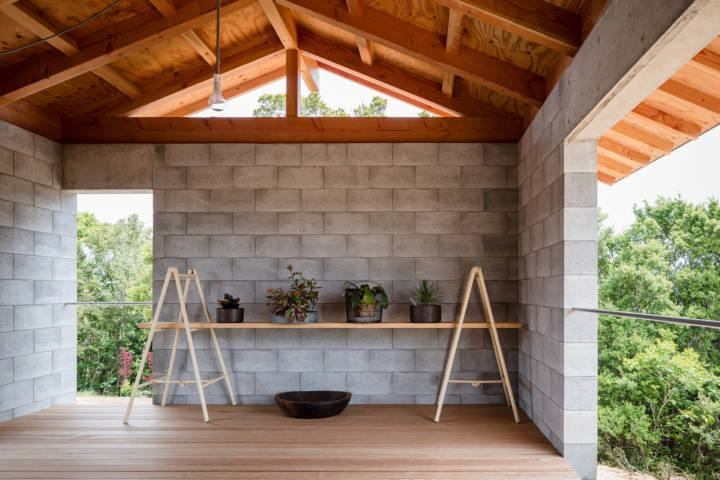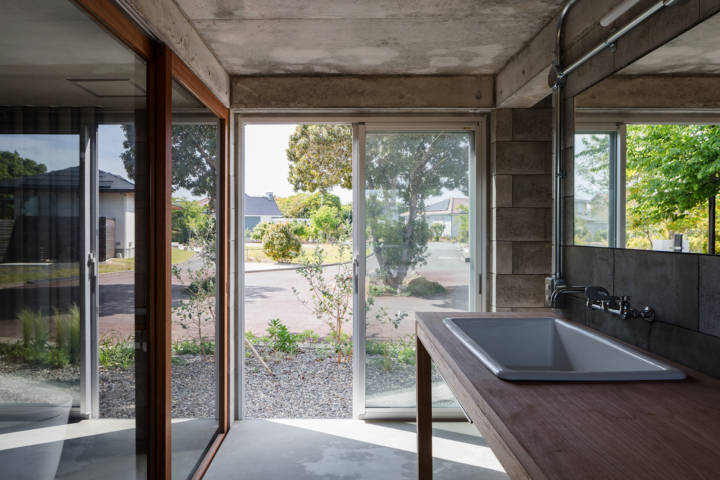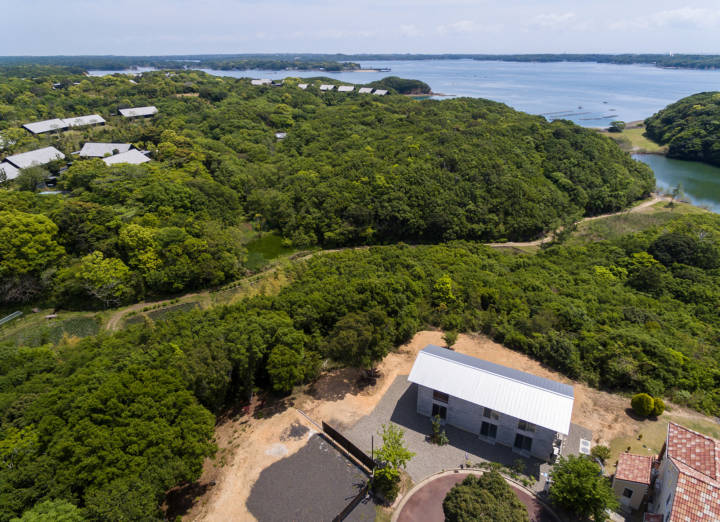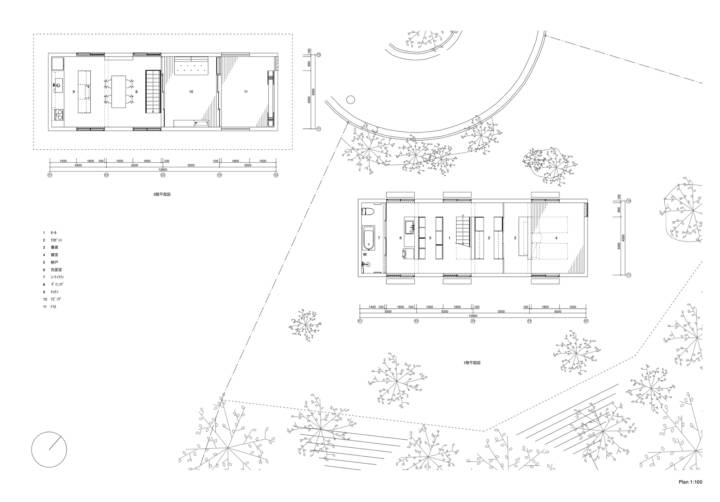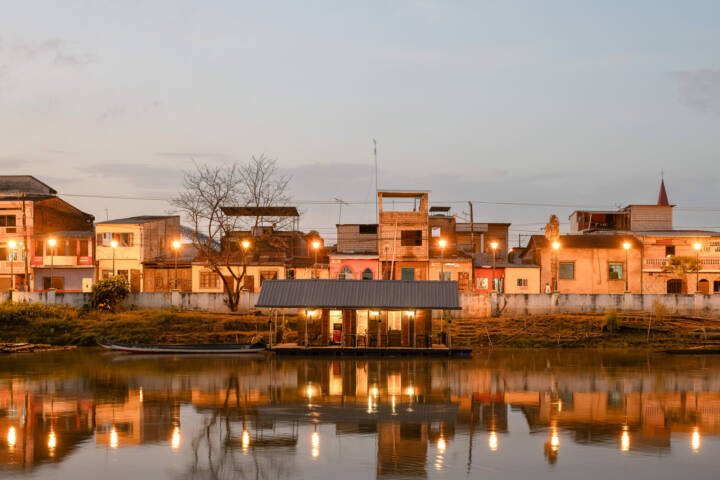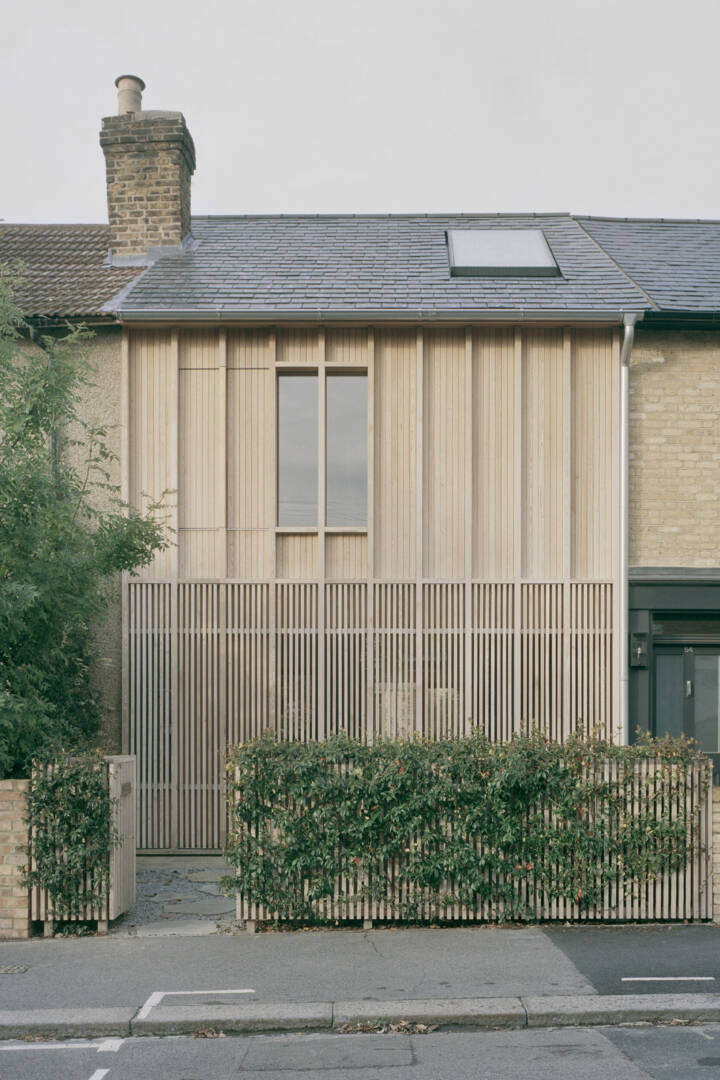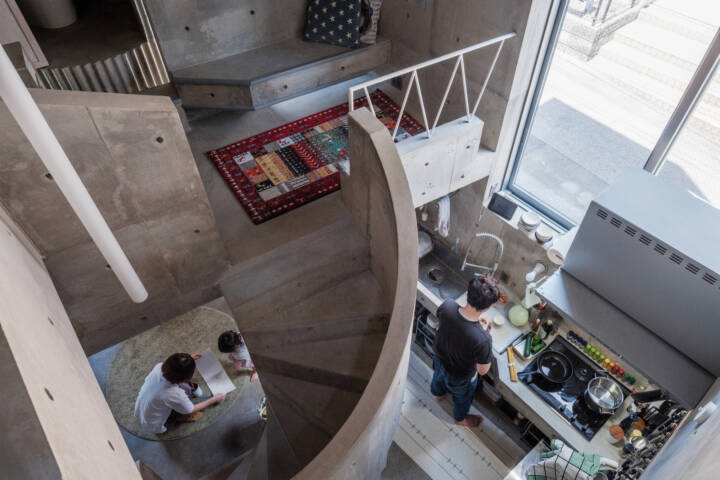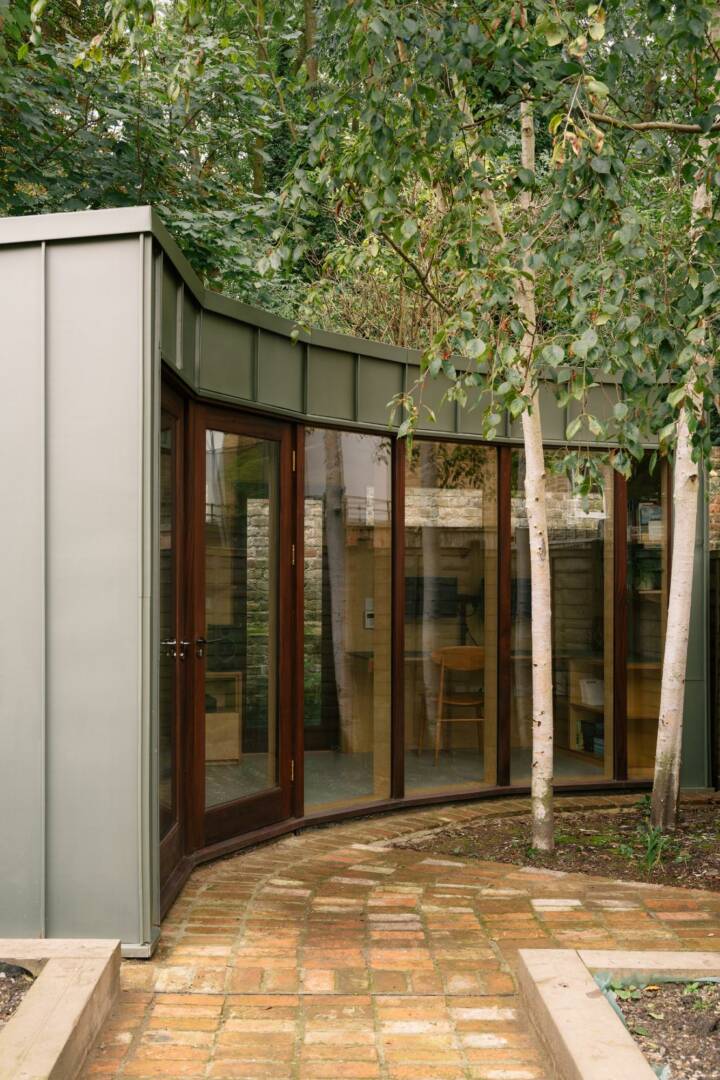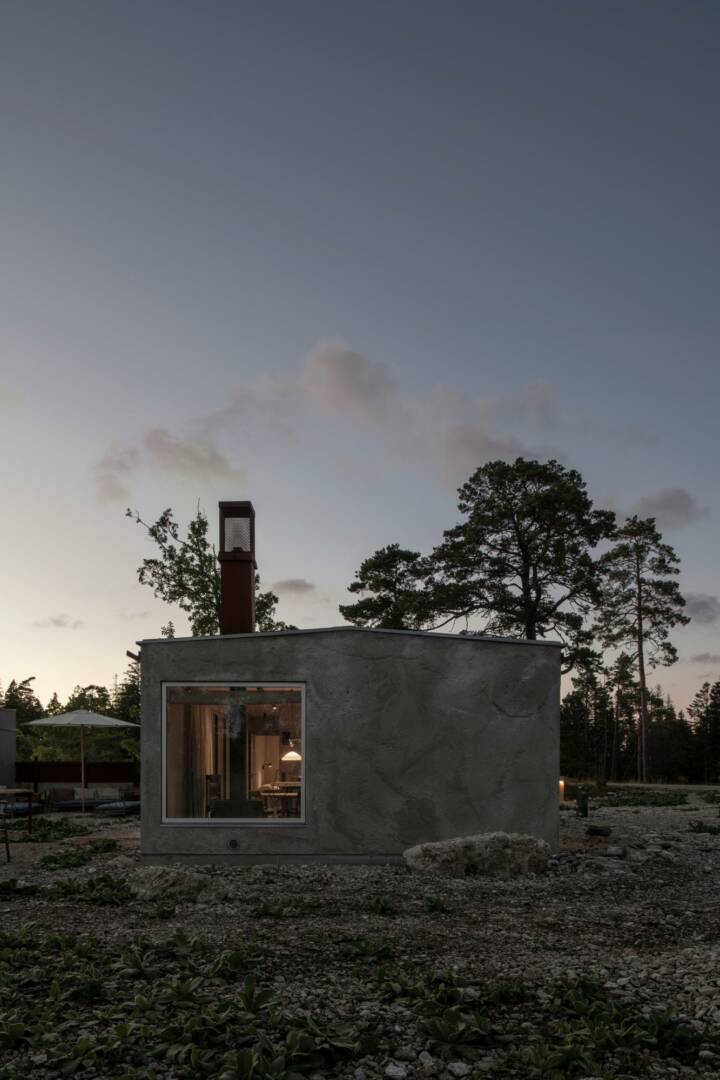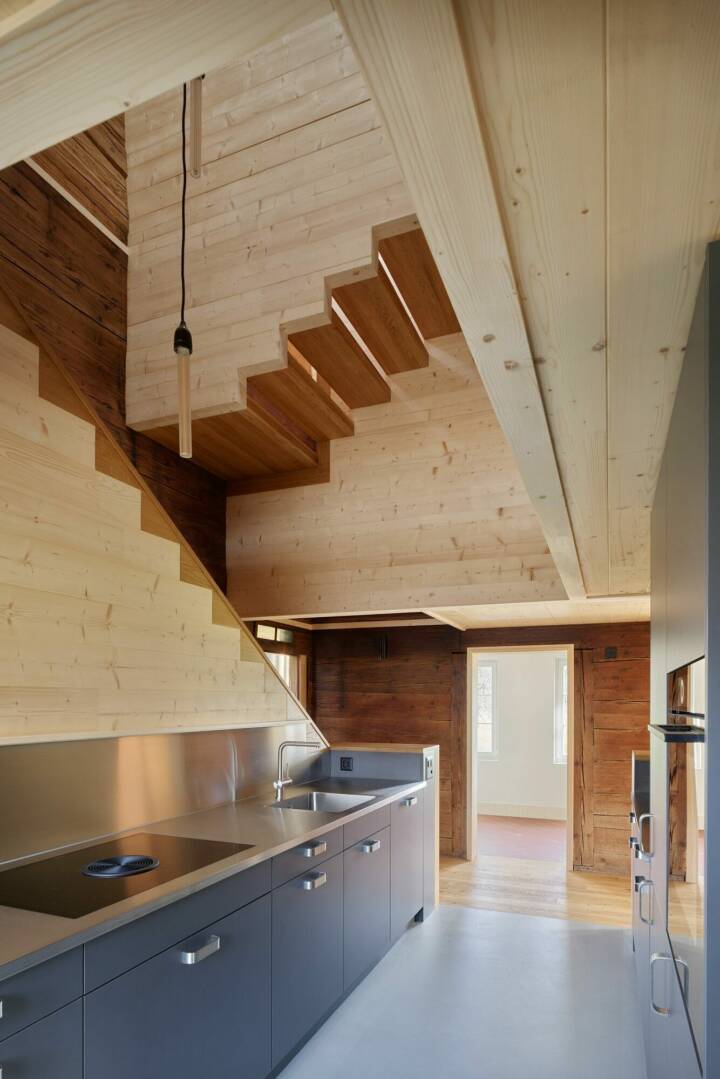Architects: KKAA YTAA Photography: Norihito Yamauchi Construction Period: 2020 Location: Shima, Japan
It is a compact weekend house built in Ise-Shima National Park. The surrounding area is dotted irregularly with private villas, corporate resorts, and standard housing for permanent residents along the winding road. It’s not a bad place for the owner who wants to spend a relaxing time in a place full of nature with a view of the sea, I felt a sense of incongruity in this townscape without a sense of unity that suddenly appeared in the wilderness of the national park. The southeast side of the site is a cliff about 30m above sea level, and the bottom of the cliff reaches the sea as it is.
A two-story reinforced concrete block structure is placed facing the sea. The distance between the cliff and the building was determined by the Cliff Ordinance. Each space on the first floor is loosely partitioned with the minimum necessary load-bearing walls and movable furniture and fittings. The ceiling height is 1880mm at the lowest point under the beam. Considering the height of the residents, the scale is kept as low as possible.
Read MoreCloseIn contrast, the second floor is a spacious space with only LDK and a terrace, and a wooden roof structure is hung. In particular, the living room and terrace are all made of the same material for the floor, walls, and ceiling, creating a vague boundary between inside and outside.
At first, we considered ignoring this townscape and creating a custom-made design that matched the personality of the owner. However, in the end, we adopted the universal model of a house, rectangle, and two-story building. Using concrete blocks that give a sense of déjà vu, and limiting the degree of freedom in design according to the standard dimensions of 200 x 400.
It seemed natural for this site to have an element that somehow leads to mass-produced standard housing. In designing, we focused on interior and exterior, universality and specialty, openness and closeness, etc. The contradictory elements that architecture inevitably creates should be in harmony with each other and coexist. By doing so, the contours and boundaries of the building are blurred, and the personal arbitrariness of us designers is diluted. I thought that it would be something that allows for various perceptions of residents and visitors, as well as all kinds of surrounding environments. Hopefully, this flexible and tolerant architecture will blend the boundary between nature and the townscape over time.
Text provided by the architect.

